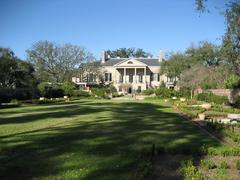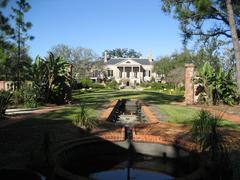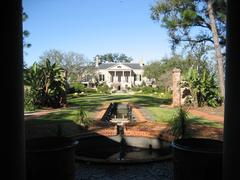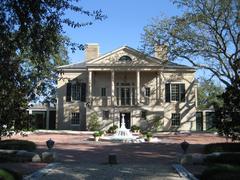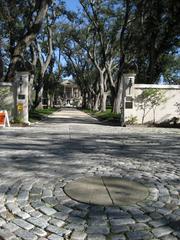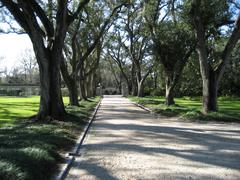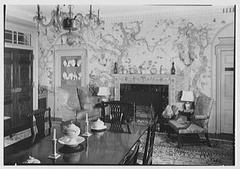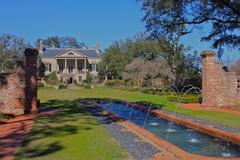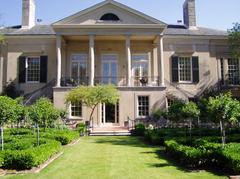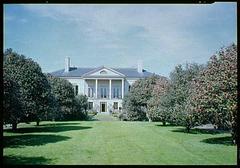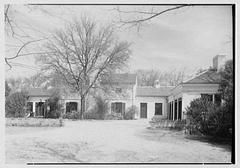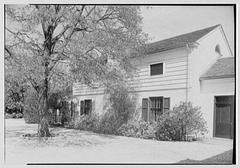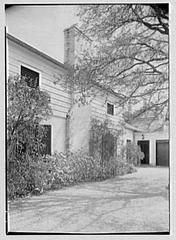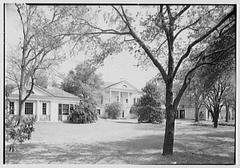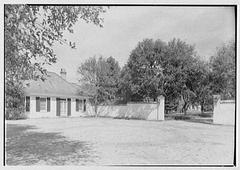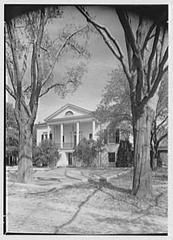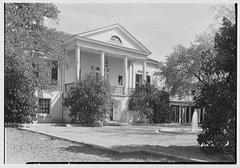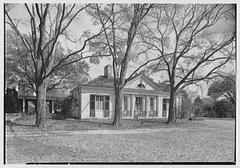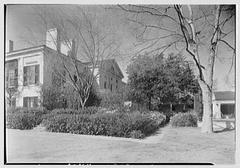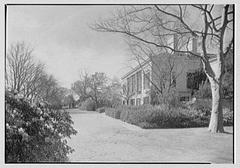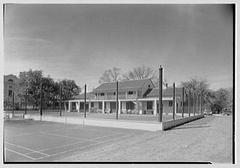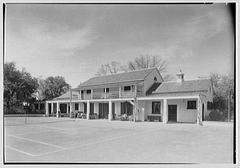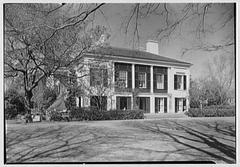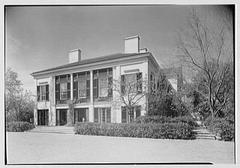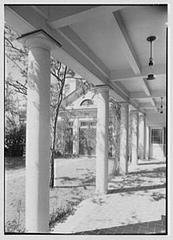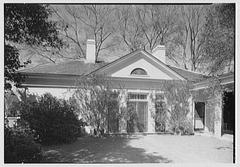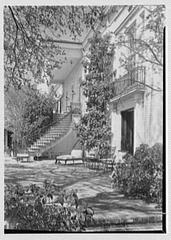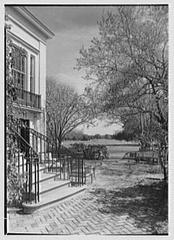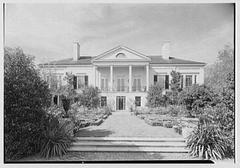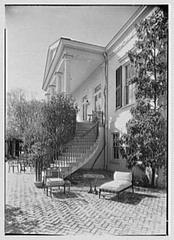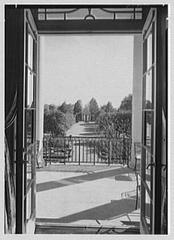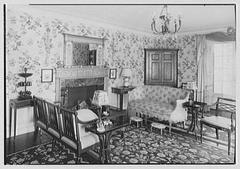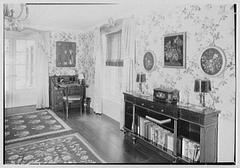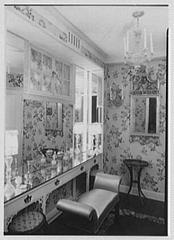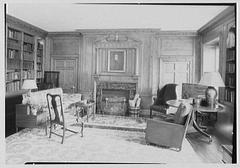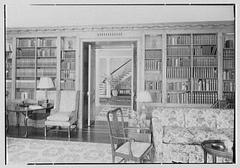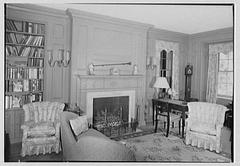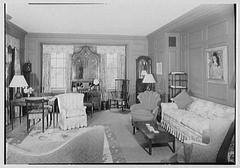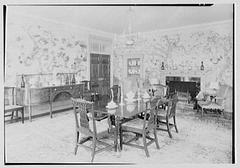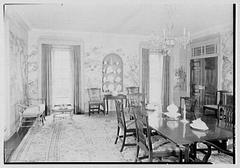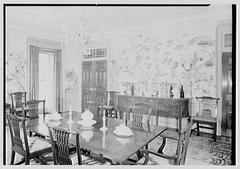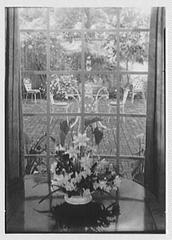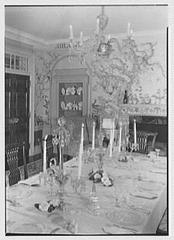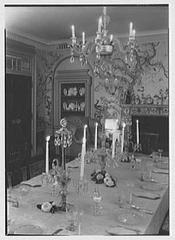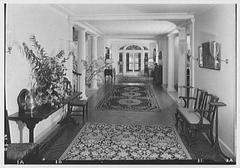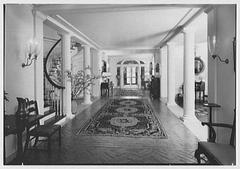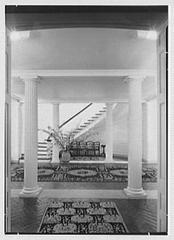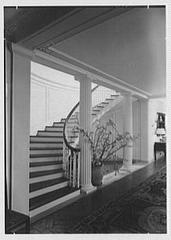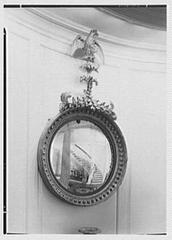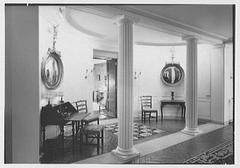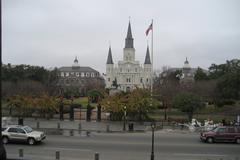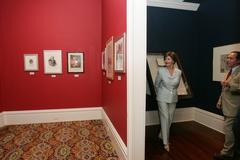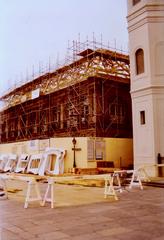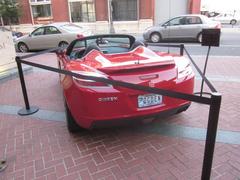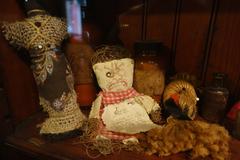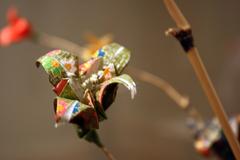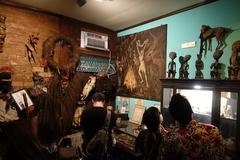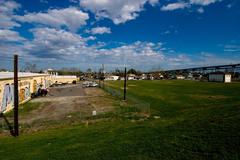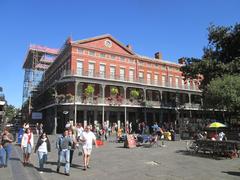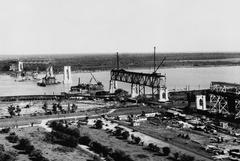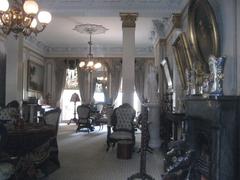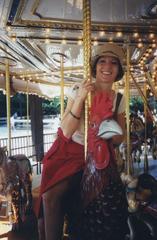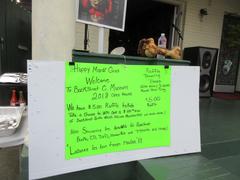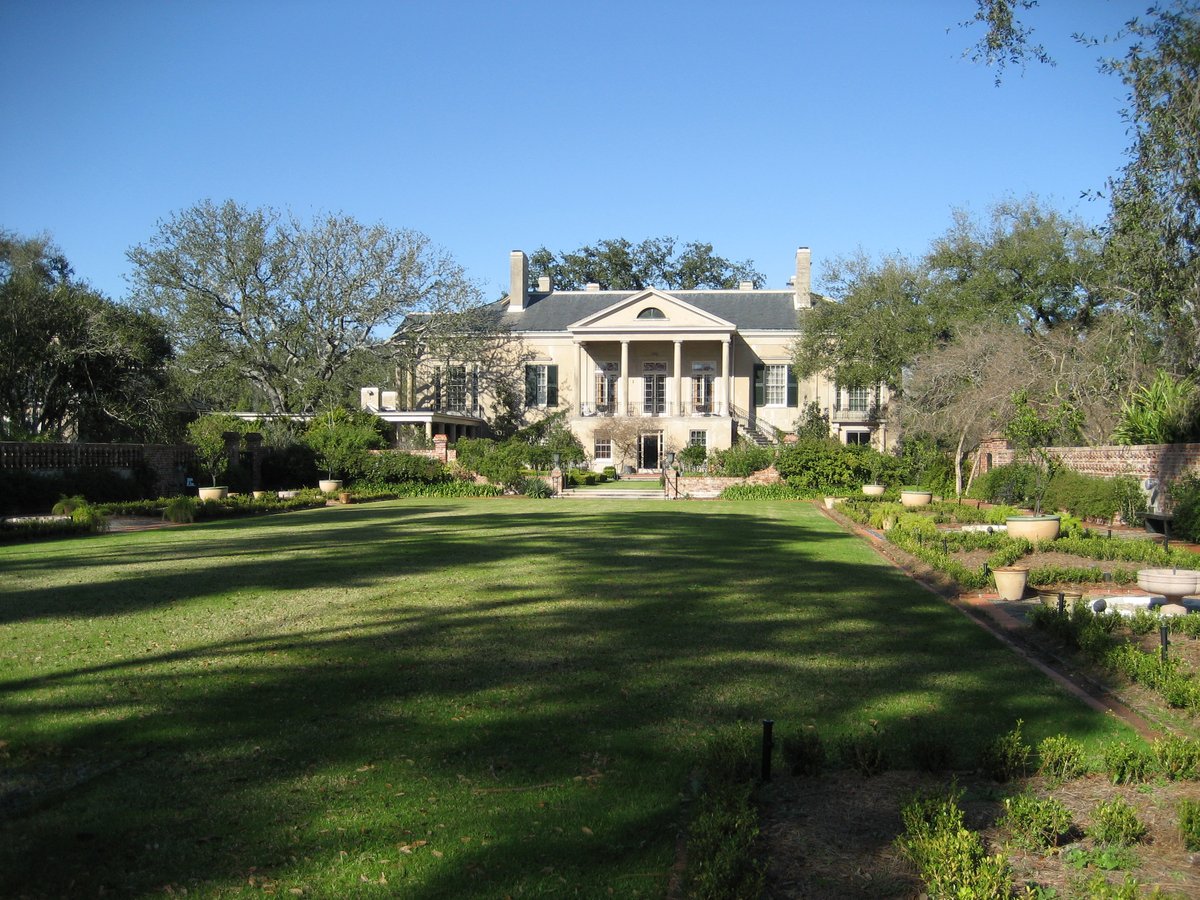
Comprehensive Guide to Visiting New Orleans Country Club, New Orleans, United States
Date: 20/07/2024
Introduction
Welcome to the ultimate guide for visiting the prestigious New Orleans Country Club (NOCC). Established in 1914, the NOCC is more than just a private club; it is a historic and cultural landmark that has played a significant role in the social, cultural, and recreational life of New Orleans. Located in the picturesque Uptown neighborhood, the club boasts a rich history, elegant architecture, and a variety of modern amenities that cater to its exclusive membership. Designed by renowned architects Toledano & Wogan, the clubhouse is a prime example of early 20th-century Southern architecture, featuring elements of the Colonial Revival style (Exploring the New Orleans Country Club). The golf course, originally designed by Seth Raynor and later enhanced by Donald Ross, is considered one of the finest in the region, attracting both amateur and professional golfers (Visiting New Orleans Country Club). This guide will provide comprehensive information on the club’s history, architectural significance, visitor information, membership details, dress codes, dining options, and much more. Whether you are a prospective member, a guest, or simply curious about this iconic institution, this guide will help you navigate your visit and make the most of your experience at the NOCC.
Table of Contents
- History of New Orleans Country Club
- Visitor Information
- Travel Tips and Nearby Attractions
- FAQ
- Membership and Access
- Dress Code
- Dining and Cuisine
- Golf Course
- Tennis and Other Sports
- Special Events and Social Activities
- Etiquette and Conduct
- Parking and Transportation
- Health and Safety
History of New Orleans Country Club
Founding and Early Years
The New Orleans Country Club (NOCC) was established in 1914, during a period when the city of New Orleans was experiencing significant growth and modernization. The club was founded by a group of prominent local businessmen who sought to create a private, exclusive space for socializing and recreation. The original site of the club was a 110-acre tract of land in the Uptown neighborhood, an area known for its grand mansions and affluent residents.
Architectural Significance
The clubhouse, designed by the renowned architectural firm of Toledano & Wogan, is a prime example of early 20th-century Southern architecture. The design incorporates elements of the Colonial Revival style, which was popular in the United States at the time. The building features a grand entrance, expansive verandas, and intricate woodwork, all of which contribute to its historic charm. Over the years, the clubhouse has undergone several renovations to modernize its facilities while preserving its architectural integrity.
The Golf Course
One of the most significant aspects of the New Orleans Country Club is its golf course, which was originally designed by the famous golf course architect, Seth Raynor. Raynor, known for his work on some of the most prestigious courses in the United States, created a challenging yet enjoyable layout that has stood the test of time. The course features a variety of holes that require strategic thinking and precise shot-making, making it a favorite among both amateur and professional golfers.
In the 1920s, the course underwent a major redesign by another legendary golf course architect, Donald Ross. Ross’s redesign included the addition of several new holes and the reconfiguration of existing ones, further enhancing the course’s reputation as one of the finest in the region. Today, the course remains a testament to the vision and skill of its original designers.
Social and Cultural Impact
Throughout its history, the New Orleans Country Club has played a significant role in the social and cultural life of the city. The club has hosted numerous high-profile events, including charity galas, weddings, and political fundraisers. Its membership has included some of the most influential figures in New Orleans, from business leaders to politicians and cultural icons.
The club has also been a hub for various recreational activities beyond golf. Tennis, swimming, and dining are just a few of the amenities that members have enjoyed over the years. The club’s dining facilities, in particular, have earned a reputation for excellence, offering a range of culinary delights that reflect the rich culinary heritage of New Orleans.
Challenges and Resilience
Like many historic institutions, the New Orleans Country Club has faced its share of challenges over the years. The Great Depression, World War II, and various economic downturns have all tested the club’s resilience. However, through careful management and the unwavering support of its members, the club has managed to weather these storms and emerge stronger.
One of the most significant challenges in recent history was Hurricane Katrina in 2005. The devastating storm caused extensive damage to the club’s facilities, including the golf course and clubhouse. In the aftermath of the hurricane, the club undertook a massive restoration effort, investing millions of dollars to repair and upgrade its facilities. This effort not only restored the club to its former glory but also reinforced its importance as a symbol of resilience and recovery in the New Orleans community.
Modern Era and Future Prospects
In the modern era, the New Orleans Country Club continues to thrive as a premier destination for recreation and socializing. The club has embraced new technologies and trends to enhance the member experience, from state-of-the-art fitness facilities to innovative dining options. The golf course remains a central attraction, hosting numerous tournaments and events throughout the year.
Looking to the future, the club is committed to preserving its rich history while adapting to the changing needs and preferences of its members. Plans for future development include further enhancements to the golf course, expanded recreational facilities, and initiatives to attract a more diverse membership. The club’s leadership is focused on ensuring that the New Orleans Country Club remains a cherished institution for generations to come.
Notable Events and Milestones
Over the years, the New Orleans Country Club has been the site of many notable events and milestones. Some of the most significant include:
- 1920s: The club hosted several prestigious golf tournaments, attracting top players from around the country.
- 1940s: During World War II, the club served as a gathering place for military personnel and their families, offering a sense of normalcy and community during a tumultuous time.
- 1960s: The club underwent a major renovation, updating its facilities to meet the needs of a growing membership.
- 2005: In the wake of Hurricane Katrina, the club’s restoration efforts became a symbol of hope and resilience for the entire city.
- 2014: The club celebrated its centennial anniversary with a series of special events and commemorations, highlighting its rich history and enduring legacy.
Visitor Information
Visiting Hours
The club is open to members and their guests from 7:00 AM to 9:00 PM daily. Specific event schedules may vary.
Tickets
As a private club, access is generally restricted to members and their guests. However, certain events may be open to the public; check the club’s official website for details.
Location
The club is located at 5024 Pontchartrain Blvd, New Orleans, LA 70118.
Contact Information
For more information, you can reach the club at (504) 482-2145 or visit their official website.
Travel Tips and Nearby Attractions
Transportation
The club is easily accessible by car, with ample parking available on-site. Public transportation options include nearby bus and streetcar lines.
Nearby Attractions
After visiting the club, explore the vibrant Uptown neighborhood, known for its historic mansions and beautiful Audubon Park. The nearby Garden District offers stunning architecture and charming shops, while the French Quarter provides a lively atmosphere with its famous music and cuisine.
FAQ
Q: Is the New Orleans Country Club open to the public? A: The club is primarily a private institution, but certain events may be open to the public. Check the club’s official website for details.
Q: What are the membership fees for the New Orleans Country Club? A: Membership fees vary; it’s best to contact the club directly for the most accurate and up-to-date information.
Q: Are there dining options available at the club? A: Yes, the club offers a range of dining options that reflect the rich culinary heritage of New Orleans.
Membership and Access
New Orleans Country Club (NOCC) is a private club, and access is generally restricted to members and their guests. If you are not a member, you will need to be invited by one to enjoy the facilities. Memberships are exclusive and can be quite costly, often requiring a nomination by existing members and approval by the club’s board. For more information on membership and visiting hours, you can visit the official NOCC website.
Dress Code
The NOCC maintains a strict dress code to preserve its traditional and elegant atmosphere. For men, collared shirts and slacks are typically required, while women are expected to wear appropriate attire such as dresses, skirts, or slacks. Denim, athletic wear, and overly casual clothing are generally not permitted. Specific dress codes may apply to different areas of the club, such as the dining room or golf course, so it is advisable to check the guidelines beforehand.
Dining and Cuisine
The club offers a variety of dining options, ranging from casual to fine dining. The main dining room serves a sophisticated menu featuring local and international cuisine, often incorporating fresh, seasonal ingredients. Reservations are recommended, especially for dinner and special events. The club also hosts themed dining nights and special culinary events throughout the year. For a detailed look at the dining options, you can check the NOCC dining page.
Golf Course
The NOCC boasts a beautifully maintained 18-hole golf course, designed to challenge players of all skill levels. Tee times are required and can be booked through the club’s pro shop. Golfers should be aware of the club’s rules and etiquette, including pace of play and proper attire. The course also features practice facilities, including a driving range and putting green. For more information on the golf course, visit the NOCC golf page.
Tennis and Other Sports
In addition to golf, the NOCC offers a range of other sports facilities, including tennis courts, a swimming pool, and a fitness center. Tennis courts can be reserved in advance, and the club often hosts tournaments and clinics for members. The fitness center is equipped with modern exercise equipment and offers personal training sessions. The swimming pool is open seasonally and features a poolside snack bar. For details on sports facilities, see the NOCC sports page.
Special Events and Social Activities
The NOCC is known for its vibrant social calendar, featuring events such as holiday parties, themed dinners, and member mixers. These events provide an excellent opportunity to socialize and network with other members. The club also hosts private events, including weddings, corporate meetings, and family gatherings. Members can book event spaces and catering services through the club’s event planning team. For upcoming events, visit the NOCC events page.
Etiquette and Conduct
Members and guests are expected to adhere to the club’s code of conduct, which emphasizes respect, courtesy, and consideration for others. Mobile phone use is generally restricted to designated areas, and loud or disruptive behavior is discouraged. The club also has policies in place to ensure the safety and comfort of all members, including guidelines for children and pets. For a complete list of rules and regulations, refer to the NOCC member handbook.
Parking and Transportation
The NOCC provides ample parking for members and guests, including valet services during peak times and special events. The club is conveniently located in the Uptown area of New Orleans, making it accessible by car or public transportation. If you are visiting from out of town, consider using a ride-sharing service or taxi to avoid the hassle of parking. For directions and transportation options, see the NOCC location page.
Health and Safety
The NOCC prioritizes the health and safety of its members and guests. The club adheres to strict hygiene and sanitation protocols, especially in dining and recreational areas. During times of public health concerns, such as the COVID-19 pandemic, additional measures may be implemented, including social distancing, mask requirements, and limited capacity for events. For the latest health and safety updates, check the NOCC health page.
Conclusion
The New Orleans Country Club stands as a testament to the enduring appeal of tradition, community, and excellence. Its rich history, architectural significance, and cultural impact make it a cherished institution in the city of New Orleans. From its founding in 1914 by prominent local businessmen to its role as a social and cultural hub, the NOCC has continually evolved to meet the changing needs of its members while preserving its historic charm (Exploring the New Orleans Country Club). The club’s golf course, designed by legendary architects Seth Raynor and Donald Ross, remains a central attraction, hosting numerous tournaments and events throughout the year (Visiting New Orleans Country Club). Beyond golf, the club offers a range of amenities, including tennis courts, a swimming pool, and exceptional dining facilities that reflect the rich culinary heritage of New Orleans (Ultimate Guide to Visiting New Orleans Country Club). As the club looks to the future, it remains committed to preserving its heritage while embracing new opportunities for growth and innovation. For visitors and members alike, the New Orleans Country Club offers a unique and memorable experience that embodies the best of Southern hospitality and charm. Plan your visit today and explore the legacy of this iconic institution (New Orleans Country Club).
References
- Exploring the New Orleans Country Club - History, Architecture, and Visitor Information, 2024, New Orleans Country Club
- Visiting New Orleans Country Club - History, Tickets, and Visitor Information, 2024, New Orleans Country Club
- Ultimate Guide to Visiting New Orleans Country Club - Membership, Dress Code, and More, 2024, New Orleans Country Club
